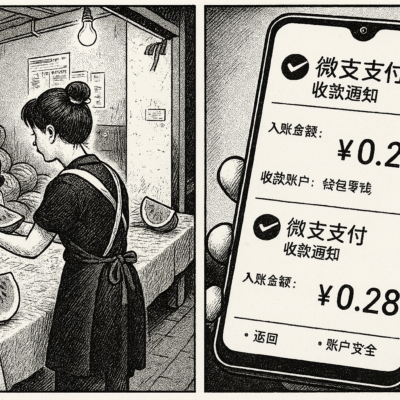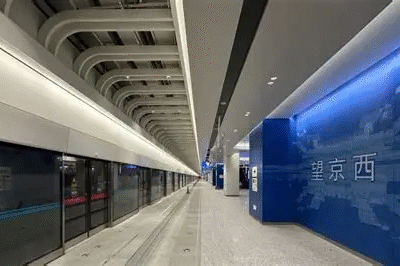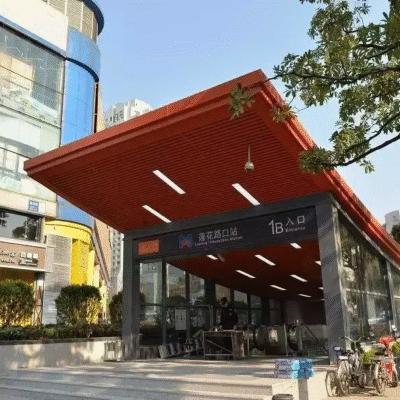When traveling in Nanjing, taking the subway is definitely a cost-effective choice. The biggest feature of Nanjing Metro is that the line design is reasonable and convenient to transfer, such as at the most prosperous Xinjiekou station, you can easily transfer between Line 1 and Line 2. Of course, these details are not necessarily the focus of attention for foreign tourists.
You just need to remember one thing: as a travel tool, the Nanjing Metro can make it easier and more efficient to play in the city! Next, through this article, you can roughly sort out the following things you may want to know:
- Specific lines of Nanjing Metro
- What are the attractions worth visiting between the routes?
- Nanjing Metro fare and some precautions
Nanjing Metro lines
Nanjing Metro is mainly divided into urban trunk lines and intercity lines (S lines). The urban trunk line covers the core area of Nanjing, which is suitable for most travelers to move and explore the city.
Intercity lines are more used for commuting between urban areas and suburbs and airports, making them very practical for tourists planning to travel to the suburbs or directly to and from the airport.
| line | Main area/end point | Pass by key stops | Nearby attractions/uses |
|---|---|---|---|
| Line 1 | China Pharmaceutical University ↔ Maigaoqiao | Nanjing South Railway Station, Xinjiekou, Drum Tower | The north-south trunk line connects the South Station and the city center |
| Line 2 | Fish mouth ↔ through the heavenly road | Xinjiekou, Xuanwumen, Nanjing Station | Purple Mountain, Sun Yat-sen Mausoleum, Ming Xiaoling |
| Line 3 | Mozhou East Road ↔ Forest Farm | Nanjing South Railway Station, Confucius Temple, Daxing Palace | Confucius Temple, Laomendong Historic District |
| Line 4 | Pearl Spring East ↔ Qixia | Jiangxinzhou, Daxing Palace, Xianlin | Hexi New Town, Xianlin University Town |
| Line 5 | Wenjing Road ↔ Fangjiaying | Jiangbei New Area, Jianye | Connecting Jiangbei with the main city |
| Line S1 (Airport Line) | Nanjing South Railway Station ↔ Lukou Airport | Jiangning | Direct to Lukou International Airport |
| Line S3 (Ninh Hoa Line) | Nanjing South Railway Station ↔ Gaojiachong | Southern Jiangning | Connecting Anhui and county directions |
| Line S7 (Ningli Line) | Airport New Castle ↔ Musoyama | Jiangning-Lishui | Jiangning Lishui commuting, Wuxiang Mountain Scenic Area |
| Line S8 (Ning Antenna) | Taishan New Village ↔ Jinniu Lake | Northern Nanjing | Jinniu Lake Scenic Area, Baibai Bridge |
| Line S9 (Ninggao Line) | Xiangyu Road South ↔ Gaochun | Jiangning-Gaochun | Gaochun Old Street, Slow Life Tourist Area |
Along Lines 2 and 3, many famous attractions in Nanjing are gathered. If you have the opportunity, you might as well get off on Line 2 and visit the Sun Yat-sen Mausoleum. It is full of tall French plane trees, and the environment is very beautiful.

Sun Yat-sen Mausoleum began construction in 1926 and was completed in 1929. This is not only the resting place of Mr. Sun Yat-sen, but also embodies the spirit of modern China’s pursuit of democracy and freedom. The cemetery is majestic and magnificent, located in the beautiful Purple Mountain, and can overlook the panoramic view of Nanjing City when you reach the top, making it an excellent place to experience the beauty of history and nature.

When I first arrived in Nanjing for school, I was taking a taxi past the school and found a sycamore avenue around the Sun Yat-sen Mausoleum. Very beautiful. I personally think that if you come to Nanjing in spring and summer but don’t come here for a walk, you will leave a little regret in your life.
Nanjing Metro fares
China is a socialist country, and one of its advantages is reflected in public transportation. Almost all subways and buses are operated by the government, and the fares are very cheap and cost-effective. Taking Nanjing as an example, the starting price of the subway is only 2 yuan, and the maximum fare is only about 6 yuan as the mileage increases;
Most buses are 2 yuan per ticket. Such a price is very low in most big cities in the world, which is not only convenient for citizens, but also reduces the travel burden of tourists.
| Mileage range | One-way fare |
|---|---|
| 0 – 4 km | 2 yuan |
| 4 – 9 km | 3 yuan |
| 9 – 14 km | 4 yuan |
| 14 – 21 km | 5 yuan |
| 21 – 28 km | 6 yuan |
| 28 – 37 km | 7 yuan |
| 37 – 48 km | 8 yuan |
| 48 – 61 km | 9 yuan |
| Over 61 km | For every additional 15 kilometers, an additional 1 yuan will be charged |
Overview of the starting and ending stations of each line of Nanjing Metro
Since the opening of the first line in 2005, the subway network has expanded rapidly, and now it has formed a convenient transportation network with multiple lines intertwined. The following is an overview of the starting and ending stations of each line of Nanjing Metro, which is convenient for passengers and citizens to check and travel.
| Subway lines | Start → End point | Main areas/stops |
|---|---|---|
| Line 1 | Mochou Lake East → China Pharmaceutical University | Xuanwu District, Gulou District, Jianye District, Jiangning District; Main stations: Xinjiekou, Xuanwumen, near Nanjing South Railway Station |
| Line 2 | Yushan Road → Shilipu | Jiangbei New District, Gulou District, Qinhuai District, Jianye District; Main stations: Xinjiekou, Confucius Temple, Hexi CBD |
| Line 3 | Nanjing South Railway Station → Liuhe Development Zone | Liuhe District, Jiangbei New Area, Jianye District, Qinhuai District; Main stations: Nanjing South Railway Station, Software Park, Longpao, Liuhe Development Zone |
| Line 4 | Longchi → Nanjing Station | Jiangning District, Qixia District, Gulou District; Main stations: Xianlin University Town, Nanjing Railway Station, around the railway station |
| Line 5 | Heding Bridge → Maigao Bridge | Jiangning District, Pukou District; Main stations: Maigao Bridge, Jiangning Development Zone, Jiangpu Street |
| Line 6 | Qilin Gate → Gaochun | Jiangning District, Gaochun District; Main stations: Qilinmen, Dongshan, Fangshan, Chunhua |
| Line 7 | Qilin Gate → Nanjing West Railway Station | Jiangning District, Qinhuai District, Gulou District; Main stations: Qilin Gate, Jiming Temple, Xinjiekou, Nanjing West Railway Station |
| Line 10 | Youfang Bridge → Maigao Bridge | Jiangning District, Pukou District; Main stations: Youfang Bridge, Maigao Bridge, Jiangning Development Zone |
| Line S1 (Airport Line) | Nanjing South Railway Station → Qifu New Village | Jiangning District, near Lukou Airport; Main stations: Nanjing South Railway Station, Lukou Airport |
| Line S3 (Ningli Intercity) | Nanjing South Railway Station → Lishui | Jiangning District, Lishui District; Main stations: Nanjing South Railway Station, Lishui City |
| S7 Line (Ningju Intercity) | Zhongling Street → Jurong West Station | Jiangning District, Jurong City; Main stations: Zhongling Street, Jurong City, Jurong West Station |
How to Take the Nanjing Metro (In-Depth Guide)
Familiarizing yourself with the subway riding process can not only save time but also enhance the travel experience. The following will be a comprehensive explanation from ticket purchase, entry and exit, boarding, safety, transfers, planning and practical skills.
Ticketing methods and ticketing strategies
In order to meet the travel needs of different passengers, Nanjing Metro has launched a variety of ticketing solutions, whether it is short-distance travel or daily commuting, you can find a ticket type that suits you.
| Ticket type | Applicable Objects | Ticket Purchase/Payment Method | Notes |
|---|---|---|---|
| One-way ticket | Suitable for short or single trips | self-service ticket vending machine purchase; Payment methods include cash, Alipay, and WeChat Pay | Keep your ticket until you exit the station, if you lose it, you will not be able to pass through the gate |
| Nanjing Transportation Card (including double-decker card / NFC card) | It is suitable for passengers who ride for a long time and change trains frequently | The card can be recharged multiple times, and it supports subway, bus, and some shared bicycle payments | Use a transportation card to enter and exit the gate, no need to purchase a ticket every time, and you can enjoy small discounts or multi-trip discounts |
| Mobile phone ride code | Suitable for tourism or short-term travel | Generate QR codes through Alipay, WeChat, or Nanjing Metro official APP | When scanning the QR code to enter and exit the gate, it is recommended to keep the mobile phone fully charged and avoid delays during peak periods |
Ticketing strategy suggestions:
- It is recommended to use a transportation card or ride code during peak hours to save time in queuing.
- If you change trains multiple times, you can use a transportation card to reduce the inconvenience of repeated ticket purchases.
Station entry process and station navigation
Security check and pit entry
Passengers must go through security before entering the subway station. All luggage must be placed in the X-ray security screening machine, and flammable, explosive, corrosive or other dangerous items, as well as oversized luggage, are prohibited. It is recommended to arrive at the station entrance early during peak hours (morning and evening commuting time) to avoid waiting in line for too long and affecting your itinerary.

For passengers with small children or the elderly, a more spacious entrance passage is available for ease of access.
Swipe tickets and scan codes
Passengers can choose to use their transportation card or mobile phone code to enter the gate. When swiping or scanning the code, please place the card or mobile phone in the gate sensor area, pay attention to the prompt sound and display information of the gate, and confirm “successful entry” before passing.

If you fail to swipe your card or scan the code, you can seek help from the station staff in time. It is recommended that the mobile phone ride code keep the screen bright enough to avoid poor sensing.
Station orientation
The signs in Nanjing Metro Station are clear, and each platform is marked with the color of the line, the name of the terminal station and the transfer direction. The station is also equipped with an electronic screen that displays train arrival information, next train time, and transfer instructions in real time.
Passengers can check the station map or app in advance to choose the shortest transfer route, especially at large transfer stations such as Xinjiekou or South Station.
Waiting on the platform
Passengers should consciously wait in line and keep a safe distance from others, especially during peak hours. Pay attention to the train arrival prompt sound and the train end point displayed on the electronic screen, confirm the direction and frequency, and avoid getting on the wrong train.

Some station platforms are equipped with screen doors that align with the screen doors when the train stops, so please wait patiently to ensure safe boarding and disembarkation.
Other practical tips
- Luggage and belongings: Large luggage can be stored in a luggage rack or backpack to avoid obstructing passage.
- Mobile phone and charging: The mobile phone ride code needs to be fully charged and carry a power bank if necessary.
- Peak avoidance strategy: If the time is flexible, you can avoid the peak hours of 7:30-9:00 in the morning and 17:30-19:00 in the evening to reduce queues and crowding.
- Transfer reminder: At the transfer station, pay attention to the exit signs and the direction of the train’s arrival, some routes may require a long walk or escalator.
Ride and safety rules in the car
- Riding etiquette
- Go down first and then go up, don’t stay at the door.
- During peak periods, try to stand on the inside and give way to the elderly, pregnant women and children.
- Equipment & Facilities
- There is an electronic screen in the carriage that displays the next stop, transfer information, and operation announcements.
- Some cars have seating areas, air conditioning, and Wi-Fi.
- In case of emergency, you can use the emergency alarm button in the cabin.
- Safety precautions
- Hold the armrest firmly and pay attention to the door switch.
- Avoid leaning on the door and large luggage to obstruct passage.
- It is recommended to sit close to the driver’s cab or crowded areas at night to improve your sense of security.
Transfer and route planning
- Transfer station identification
- Nanjing Metro Line Interchange Station has eye-catching signs indicating different line platforms and directions.
- Pay attention to the marking “transfer in the same direction” to avoid trains in the opposite direction.
- Transfer steps
- After exiting the station, go to the transfer platform, and some stops take a few minutes to walk.
- Use the same transportation card or mobile phone code to transfer, no need to purchase tickets again.
- Route planning tips
- Plan ahead during peak periods and save time by choosing routes with fewer transfers.
- Use the official subway APP or third-party navigation app to check the train arrival time, transfer suggestions and shortest route in real time.
5. Outbound and shuttle transportation
- Swipe your card or scan the QR code gate when leaving the station to exit the station smoothly.
- After leaving the station, you can usually connect to buses, rental cars, and shared bicycles, and some stations have ground commercial areas and shopping malls.
- During peak hours, you can choose a diversion exit to avoid crowds.
Advanced riding skills and advice
- Peak avoidance strategy
- 7:30–9:00 a.m. and 17:30–19:00 p.m. are peak periods, so it is recommended to avoid or travel early.
- Convenience tools
- The official subway APP provides real-time train operations, arrival reminders, and transfer suggestions.
- It is recommended to take a photo of the subway route map to facilitate inquiry when there is no internet.
- Ride safe
- Take care of your belongings, especially in crowded carriages.
- Pay attention to emergency communication facilities and exit signs, and familiarize yourself with emergency escape routes.
- Ticket savings
- Long-term passengers can purchase transportation card monthly passes or recharge discounts to reduce one-way ticket expenses.
Looking at the Nanjing Metro, it is not only a means of transportation, but also represents an efficient urban travel experience. The subway line design fully covers the urban area and surrounding major areas, and the transfer station layout is reasonable, effectively saving passengers’ commuting and travel time. Diverse ticketing methods – one-way tickets, transportation cards and mobile ride codes – cater to different travel needs, whether short-term travelers or long-term residents, they have the flexibility to choose the most suitable method.
The subway cars are comfortable, well-equipped, with clear station directions, and a modern electronic information system make it easy to navigate even in unfamiliar cities. Order management and safety measures during peak periods ensure the reliability of travel. For tourists, after mastering the route and transfer skills, they can reach the attractions in the shortest time, reducing transportation costs and improving travel efficiency and experience.
All in all, the Nanjing Metro combines convenience, economy and safety, making it an ideal transportation choice for exploring Nanjing’s urban landscape and cultural attractions, and also demonstrates a model of modern urban transportation planning.



